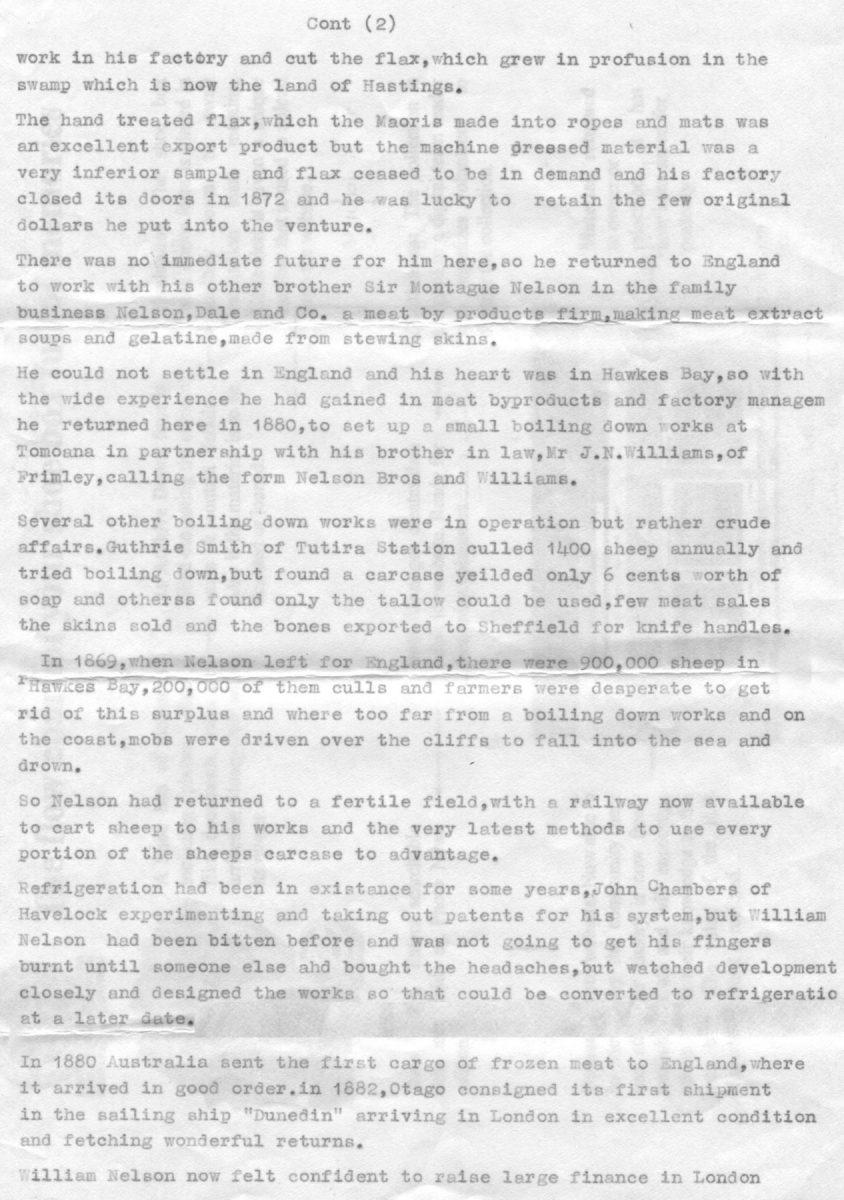Cont (2)
work in his factory and cut the flax, which grew in profusion in the swamp which is now the land of Hastings.
The hand treated flax, which the Maoris made into ropes and mats was an excellent export product but the machine dressed material was a very inferior sample and flax ceased to be in demand and his factory closed its doors in 1872 and he was lucky to retain the few original dollars he put into the venture.
There was no immediate future for him here, so he returned to England to work with his other brother Sir Montague Nelson in the family business Nelson, Dale and Co. a meat by products firm, making meat extract soups and gelatine, made from stewing skins.
He could not settle in England and his heart was in Hawkes Bay, so with the wide experience he had gained in meat byproducts and factory managem[ent] he returned here in 1880, to set up a small boiling down works at Tomoana in partnership with his brother in law, Mr J.N. Williams, of Frimley, calling the form [firm] Nelson Bros and Williams.
Several other boiling down works were in operation but rather crude affairs. Guthrie Smith of Tutira Station culled 1400 sheep annually and tried boiling down, but found a carcase yeilded [yielded] only 6 cents worth of soap and others found only the tallow could be used, few meat sales the skins sold and the bones exported to Sheffield for knife handles.
In 1869, when Nelson left for England, there were 900,000 sheep in Hawkes Bay, 200,000 of them culls and farmers were desperate to get rid of this surplus and where too far from a boiling down works and on the coast, mobs were driven over the cliffs to fall into the sea and drown.
So Nelson had returned to a fertile field, with a railway now available to cart sheep to his works and the very latest methods to use every portion of the sheeps carcase to advantage.
Refrigeration had been in existance [existence] for some years, John Chambers of Havelock experimenting and taking out patents for his system, but William Nelson had been bitten before and was not going to get his fingers burnt until someone else ahd [had] bought the headaches, but watched development closely and designed the works so that could be converted to refrigeration at a later date.
In 1880 Australia sent the first cargo of frozen meat to England, where it arrived in good order. in 1882, Otago consigned its first shipment in the sailing ship “Dunedin” arriving in London in excellent condition and fetching wonderful returns.
William Nelson now felt confident to raise large finance in London














Do you know something about this record?
Please note we cannot verify the accuracy of any information posted by the community.